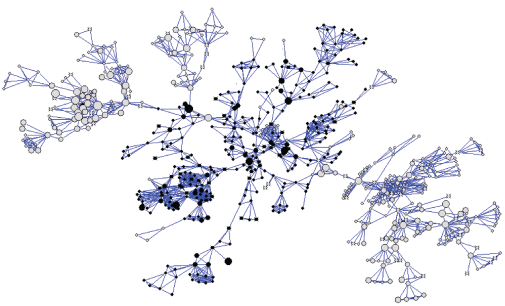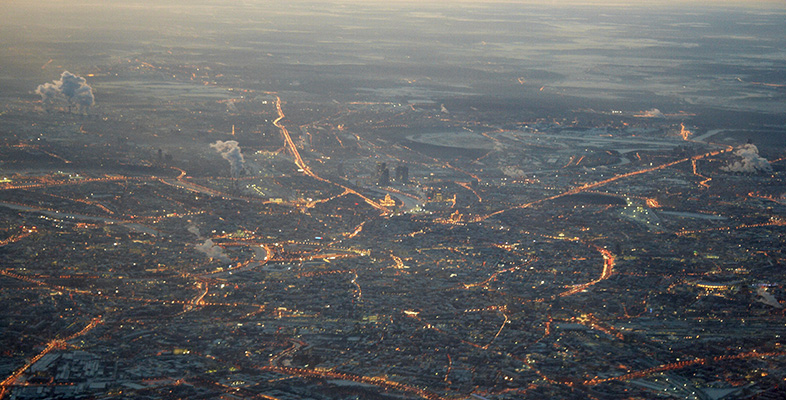10.2 Organisation networks
Various authors have attempted to make sense of organisational complexity. The British anthropologist Robin Dunbar proposed a limit to the number of people with whom an individual can maintain a stable and ongoing relationship. There is no precise agreement on Dunbar’s number, but a value of 150 is generally accepted. If just two people constitute an organisation, using Dunbar’s number, up to 300 other individuals might have some bearing on those two individuals’ ideas and practices. Clearly this scale of ‘open’ influence is unlikely to be the case for most organisations, which have a much more structured work pattern and roles that determine how members of the organisation function within and outside the organisation. However, it does give a sense of the possible networks and relationships within and outside organisations.
Interest in the role and function of the networks of relationships led to the development of Network Theory, which has sought to identify patterns of relationships between people or entities in social, organisational, formal and informal settings. Network theorists often use diagrams and graphics to convey the relationships. One such example (see Figure 9) is taken from a paper written by Lee Fleming and Koen Frenken (2007) and shows the networks of key inventors involved in Silicon Valley, California.

Figure 9 shows that IBM employees (past and present; the black dots) were key to enabling the inventor network (responsible for innovations in computer design and technology in Silicon Valley) to develop and expand. The lighter coloured dots are all the other companies involved or influenced in some manner. Although the local culture and regulatory context were factors, the development of the network was largely attributed to the flexibility and success of IBM’s early postgraduate programme ‘seeding’ the future inventor network with individuals who had previous links to IBM – with all the likely benefits for IBM that this would entail. Figure 9 conveys the complexity of relationships existing within and between organisations, and the contexts in which they operate. It also suggests organisations are not necessarily as ‘fixed’ and bounded as we might at first assume, and that it is sometimes hard to assign boundaries to an organisation.
When thinking about the relationships between an organisation and its natural environment, it is also important to be aware that the structures and associated processes of organisations vary widely and are also rapidly changing. Global corporate organisations are highly complex structures with myriad locations and activities. Internet and mobile technologies are also changing organisations, shifting from wholly physically based entities with offices towards distributed networks of online participants. This trend is likely to continue exponentially, with predictions of holographic offices within the next decade (see Heraghty, 2012).
This means flexibility is needed when thinking about what constitutes an organisation and the complexity of its activities. It follows that the relationships between organisations and the natural environment are equally complex.
